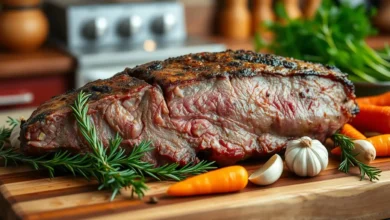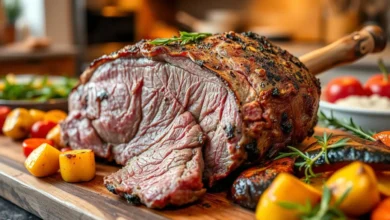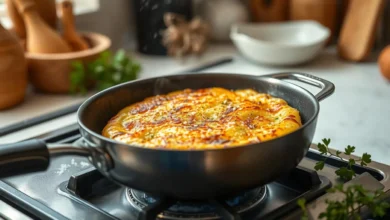Homemade Armenian Lavosh Recipe: Crispy Flatbread
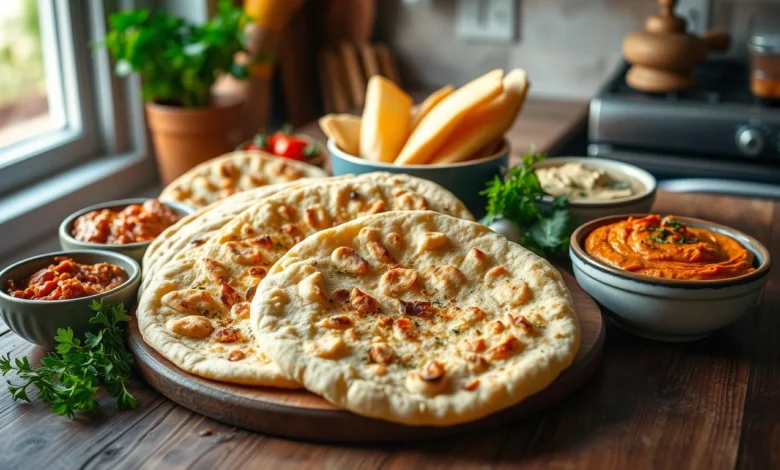
Learn how to make authentic Armenian lavosh, a tasty and versatile flatbread. Lavosh, also known as lavash, is a key part of Armenian cuisine. It’s loved for its use with many dishes. This recipe will help you make light, crispy, and flavorful lavosh at home.
Lavosh is famous for its thin, cracker-like texture and simple yet tasty flavor. Making it yourself opens up a world of possibilities. You can serve it as a side or use it for creative appetizers and snacks.
Understanding Traditional Armenian Lavosh
Lavosh, the iconic Armenian flatbread, has a rich history and cultural significance. It is deeply woven into Armenian cuisine. This versatile and delicious staple has been cherished for centuries, crossing time and regions.
History and Cultural Significance
The origins of traditional lavosh go back to ancient Armenia. It was a key part of daily life and ceremonies. For millennia, flatbreads like lavosh have been crucial in Armenian cuisine.
They date back to the Bronze Age. The art of making lavosh has been passed down through generations. This has kept its cultural heritage and culinary importance alive.
Regional Variations
In Armenia’s diverse regions, traditional lavosh shows local traditions and ingredients. From thin, crisp highland versions to thicker, chewier lowland ones, each region has its own. These differences highlight the adaptability and versatility of this beloved staple.
Traditional Uses in Armenian Cuisine
Lavosh is a mainstay in Armenian meals and celebrations. It’s used as a base for spreads, sauces, and toppings. This adds a satisfying crunch and a canvas for flavors.
From meze platters to traditional stews, lavosh is key in Armenian cuisine. It connects everyday meals to cultural heritage.
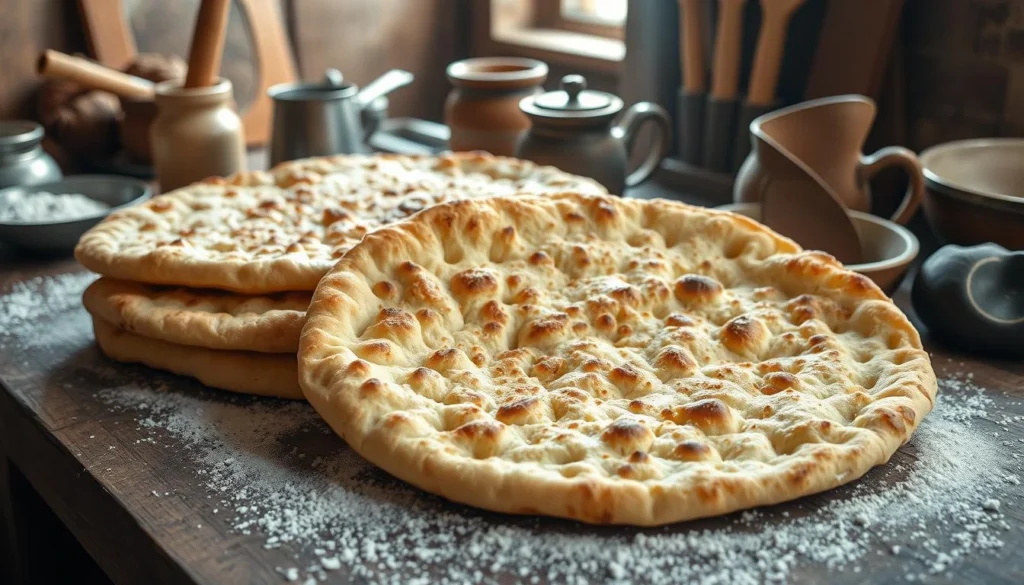
“Lavosh is more than just a flatbread; it’s a cultural touchstone, a symbol of Armenia’s rich culinary legacy, and a testament to the enduring traditions that shape the country’s gastronomic identity.”
Essential Ingredients for Perfect Lavosh Recipe
Making an authentic lavosh, the classic Armenian yeast-free flatbread, is simple. It needs just a few basic ingredients. The secret to a perfect crisp, flaky texture is knowing the right ingredients and their roles.
The dough’s foundation is all-purpose flour. This flour gives the dough the structure and stability to roll out thinly and evenly. Choose a high-quality, unbleached flour that’s best for lavosh.
Salt is another key ingredient. Though it’s just a small amount, it boosts the lavosh‘s flavor. It balances the flour’s neutral taste.
- All-purpose flour
- Salt
- Water
The last must-have is water. The right amount of water makes the dough easy to work with. This results in the perfect lavosh texture.
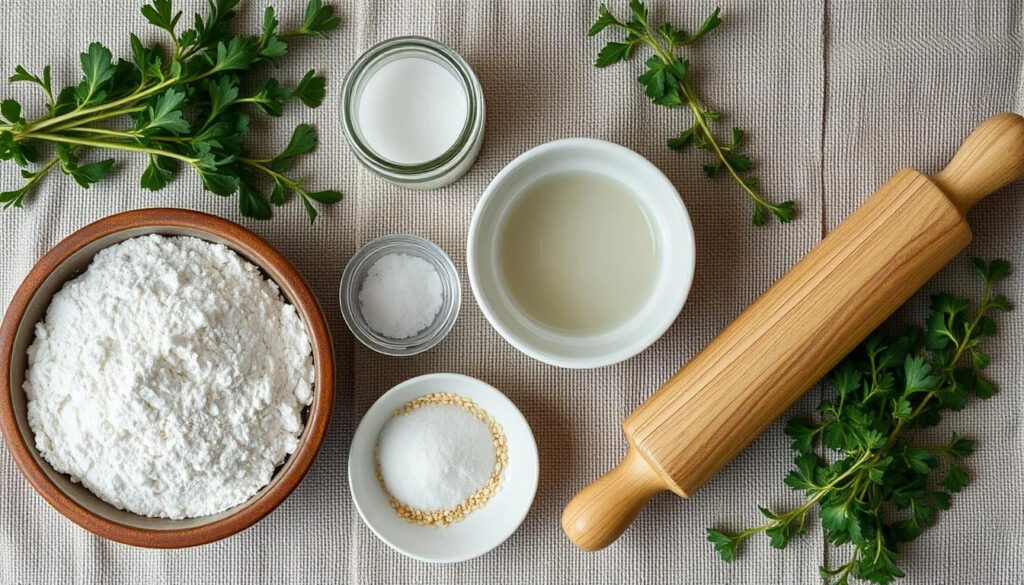
“The simplicity of the lavosh ingredient list is part of what makes it such a versatile and beloved flatbread.”
While these three ingredients are all you need for traditional lavosh, some recipes might suggest optional extras. These could be sesame seeds or herbs to add more flavor. But the true heart of this flatbread is the perfect mix of flour, salt, and water.
Kitchen Tools and Equipment You’ll Need
Learning to make lavosh at home needs the right tools. While old Armenian bakers used traditional ways, today’s cooks can use flatbread equipment and lavosh baking tools for better results.
Traditional vs Modern Equipment
Long ago, Armenian homes used a “saj” – a heavy, flat metal or stone griddle over an open flame. Now, a sturdy baking steel or pizza stone in a conventional oven can give similar results.
Old rolling pins were made of wood or marble. Now, rolling pins are made of stainless steel, silicone, and even textured rollers. These help make the unique lavosh texture.
Essential Baking Tools
- Rolling pin (wooden, stainless steel, or textured)
- Baking sheets or pizza stones
- Parchment paper or silicone baking mats
- Oven mitts or heat-resistant gloves
- Cooling racks
- Pastry brush (for egg wash or water misting)
With the right tools, you’ll make perfectly crisp and authentic lavosh in your kitchen.
Step-by-Step Mixing and Dough Preparation
Making the perfect Armenian lavosh dough is key to a delicious crispy flatbread. It’s all about blending ingredients right and kneading the lavosh dough to the perfect texture.
First, get all the ingredients for your lavosh dough. You’ll need flour, salt, water, and yeast. Make sure to measure everything carefully. This helps make a balanced and easy-to-work-with flatbread preparation.
- Start by activating the yeast. Mix warm water, sugar, and yeast in a small bowl. Let it sit for 5-10 minutes until it gets frothy and active.
- In a big mixing bowl, mix flour and salt. Make a well in the middle and add the yeast mixture.
- Slowly mix the dry ingredients into the wet ones. Knead the lavosh dough until it’s smooth and elastic. If it’s too sticky, add flour. If too dry, add water.
- Put the lavosh dough on a floured surface and knead for 5-10 minutes. Use the kneading techniques you like best. The dough should feel smooth and slightly sticky.
After kneading, put the lavosh dough in a greased bowl. Cover it with a damp cloth or plastic wrap. Let it rise for 30-60 minutes, until it doubles in size. This step is important for the dough’s structure and flavor.
Now that the lavosh dough is ready, you can roll and bake your Armenian flatbread. Remember, the secret to great lavosh is in how you prepare the dough.
Techniques for Rolling Perfect Lavosh
Getting the right thickness is key when rolling out your rolling lavosh dough. You want to roll it evenly for a thin, uniform thin flatbread. This will bake into a crisp, flaky texture. Here are some tips to help you roll it perfectly every time.
Achieving the Right Thickness
Begin by breaking your dough into smaller pieces. This makes it easier to roll each part evenly. Use a rolling pin to roll the dough gently, applying light pressure and rotating it as you go. Aim for a thickness of about 1/8 inch or less for the best texture.
- Use a light touch and avoid pressing too hard, which can cause the dough to tear or become uneven.
- Roll the dough out in multiple directions to ensure a consistent thickness throughout.
- If the dough starts to stick, lightly flour the surface or use a silicone rolling mat to prevent adhesion.
Troubleshooting Common Rolling Issues
Even with the best technique, you might face challenges when rolling out your rolling lavosh dough. Here are some common problems and how to fix them:
- Uneven Thickness: If your lavosh is thicker in some areas, gently roll the thicker sections a bit more to even out the overall thickness.
- Sticking Dough: If the dough is sticking to the rolling surface, try lightly flouring the area or using a silicone rolling mat. You can also try chilling the dough for 30 minutes before rolling.
- Tearing or Cracking: If the dough is tearing or cracking during rolling, it may be too dry. Try adding a small amount of water (1-2 teaspoons) and kneading it in to add moisture.
With a bit of practice and these expert techniques, you’ll soon be rolling out perfect, even thin flatbread lavosh.
Baking Temperature and Time Guidelines
To get the perfect baked lavosh, you need to control the oven temperature and baking time well. Whether you like it thin and delicate or thicker with a crunch, knowing these details is key.
For a classic crispy lavosh, use an oven at 400-425°F (205-220°C). This heat makes the dough puff up and get that golden-brown color and crunch. Bake for 10-15 minutes, watching closely to avoid burning.
- For a thinner, more delicate texture, reduce the oven temperature to 375-400°F (190-205°C) and bake for 8-12 minutes.
- For a thicker, chewier baked lavosh, increase the temperature to 425-450°F (220-230°C) and extend the baking time to 12-18 minutes.
Keep an eye on your lavosh while it bakes. It can quickly go from crispy flatbread to burnt. So, be ready to adjust the oven temperature and baking time as needed.
| Lavosh Thickness | Oven Temperature | Baking Time |
|---|---|---|
| Thin and Delicate | 375-400°F (190-205°C) | 8-12 minutes |
| Classic Crispy | 400-425°F (205-220°C) | 10-15 minutes |
| Thick and Chewy | 425-450°F (220-230°C) | 12-18 minutes |
Remember, oven temperatures and baking times can vary. This depends on your oven and dough thickness. So, be ready to experiment and adjust to get your desired crispy flatbread texture.
Tips for Achieving Crispy Texture
Getting the perfect crispy texture in your homemade crispy lavosh is essential for a true Armenian flatbread taste. Here are some expert tips to help you achieve crispiness every time:
Common Mistakes to Avoid
- Overworking the dough: Too much kneading can make the flatbread texture tough and chewy instead of crispy.
- Rolling the dough too thin: While thin is good, too thin can make the flatbread brittle and prone to cracking.
- Overbaking: Watch the oven closely to avoid overbaking, which can burn the lavosh and give it a bitter taste.
Storage Recommendations
Storing your crispy lavosh properly is key to keeping it fresh and crispy. Here’s how to store your homemade lavosh:
- Let the baked lavosh cool completely before storing.
- Store it in an airtight container or resealable plastic bag at room temperature.
- Don’t store it in the fridge, as the moisture can make the flatbread texture soft and stale.
- Enjoy the storing lavosh within 3-5 days for the best crispiness and freshness.
By following these tips and avoiding common mistakes, you can enjoy the satisfying crunch of homemade Armenian lavosh anytime. Serve it with your favorite dips, spreads, or toppings for a truly authentic and delicious experience.
Serving Suggestions and Pairings
Serving homemade Armenian lavosh is a joy. It’s great with Mediterranean dishes and dips, perfect for snacks. Here are some tasty ways to enjoy your lavosh.
Try it with hummus, baba ghanoush, or tzatziki. The lavosh’s crispness is great for scooping up these dips. Pair it with marinated olives, roasted red peppers, or Mediterranean cheeses for a simple but tasty platter.
For something different, try tapenade spreads like sun-dried tomato or olive. These spreads add bold flavors to the lavosh. Mix and match to find your favorite.
| Serving Suggestion | Pairing |
|---|---|
| Appetizer Platter | Hummus, Baba Ghanoush, Tzatziki, Olives, Roasted Red Peppers, Mediterranean Cheeses |
| Tapenade Spreads | Sun-Dried Tomato Tapenade, Olive Tapenade |
| Salad Accompaniment | Greek Salad, Mediterranean Quinoa Salad, Tabbouleh |
| Soup Accompaniment | Lentil Soup, Chicken Orzo Soup, Minestrone |
For a bigger meal, serve lavosh with salads or soups. It’s great with Mediterranean salads like Greek salad or tabbouleh. It also goes well with soups like lentil or chicken orzo.
There are many ways to serve Armenian lavosh. Try different pairings and get creative. Find the best way to enjoy this delicious flatbread.
Flavor Variations and Modern Twists
The Armenian lavosh is perfect for trying new flavors and modern twists. You can make a classic herb-infused flatbread or a gourmet flavored lavosh. The choices are endless.
Popular Seasonings and Toppings
Make your homemade lavosh special with spices, herbs, and toppings. Mix in za’atar, sumac, or chili powder for a Middle Eastern taste. Add fresh rosemary, thyme, or oregano for a savory flavor.
For a treat, top it with shredded cheese, sun-dried tomatoes, or roasted garlic. This will make your herb-infused flatbread even more delicious.
Creative Serving Ideas
Try new ways to serve your gourmet lavosh. Cut it into wedges for a unique appetizer or strips for a fun snack. Use it to wrap your favorite fillings for a tasty sandwich.
Crumb it over salads and soups for a nice texture. The Armenian lavosh is very versatile and can be used in many ways.
FAQ
What is lavosh?
Lavosh, also known as lavash, is a thin, crispy Armenian flatbread. It’s a key part of Mediterranean cuisine and Armenian culture for centuries.
How do I make homemade lavosh?
Making lavosh at home is easy. You just need flour, water, and salt. With the right steps, you can make delicious, crispy lavosh in your kitchen.
What are the key ingredients for a perfect lavosh recipe?
To make real lavosh, you need flour, water, salt, and sometimes oil or butter. The right mix and kneading are key for the perfect texture.
What kitchen tools do I need to make lavosh?
You’ll need basic tools like a rolling pin, baking sheets, and an oven. You might also use a special lavosh board or domed lid.
How do I roll lavosh to the perfect thickness?
Rolling lavosh thin is crucial for crispiness. Aim for about 1/8 inch thickness. Proper kneading and flour use are important.
What’s the best way to bake lavosh to get it crispy?
Bake lavosh at 450°F (230°C) for the right time. Watch it closely and adjust baking time to get it crispy.
How do I store leftover lavosh to keep it crisp?
Store leftover lavosh in an airtight container at room temperature. Don’t refrigerate it to keep it crisp. If it gets soft, reheat it briefly in the oven.
What are some tasty ways to serve and enjoy lavosh?
Lavosh is versatile and great with dips, spreads, and cheeses. It’s also perfect for appetizers and snacks. Try different toppings and seasonings for unique flavors.
